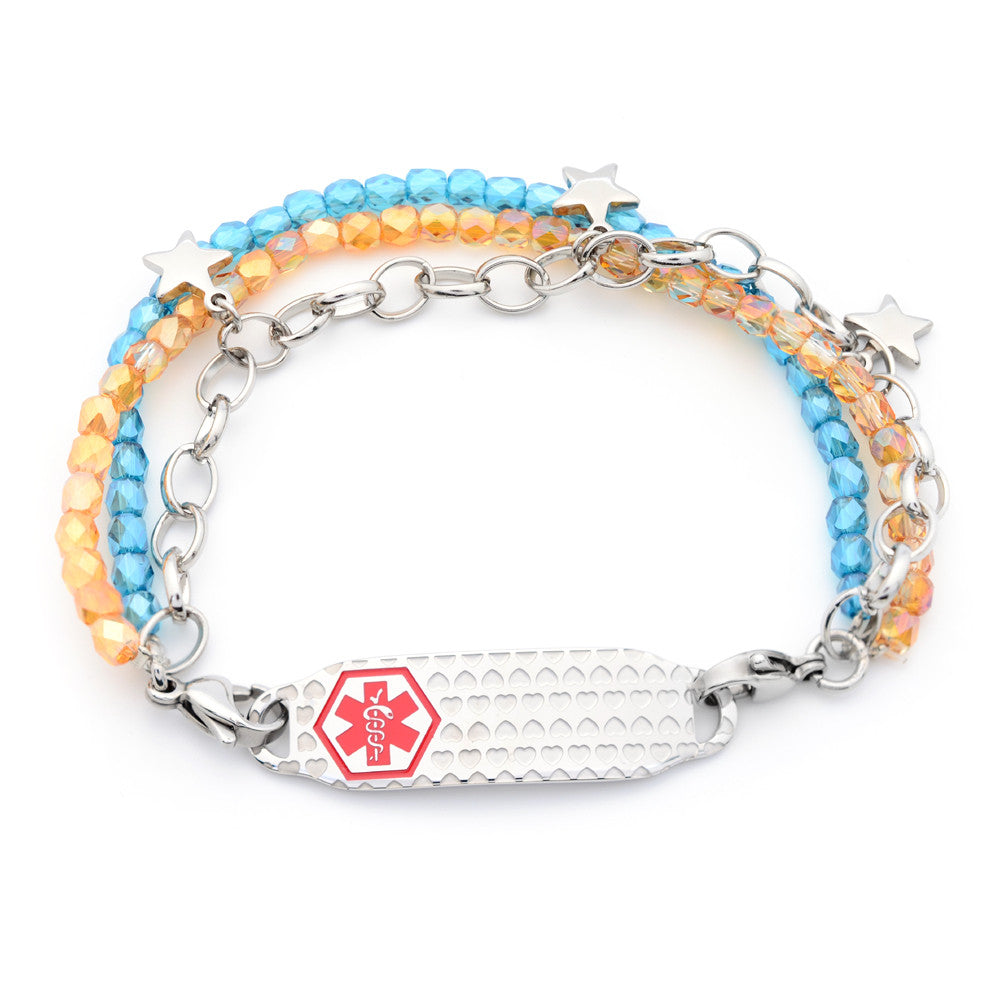
A Blood Thinner Medical ID Bracelet provides more security for heart patients
Share
Blood Thinners is the most familiar treatment for heart patients,Blood thinners prevent blood clots, which can stop blood flow to the heart.Blood thinners are medications taken orally or intravenously (through a vein) to prevent a blood clot. Blood clots stop the flow of blood to the heart, lungs, or brain. They can cause a heart attack or stroke.Your doctor may recommend taking a blood thinner if you have heart disease, including heart valve disease and irregular heart rhythms.
At the same time, adamant most cardiologists and general practitioners are about ensuring that their patients wear "heart patient" medical ID bracelets or necklaces, and especially that people on blood thinners wear medical ID jewelry.
Wearing a Blood Thinner Medical ID Bracelet will have the following benefits:

A:Blood thinners may cause side effects in some people.Excessive bleeding is the most common reaction.The presence of blood thinners also can increase your risk of internal bleeding after an injury. Wearing a medical ID jewelry will always remind you to pay attention to reduce the risk of bleeding,But also in the event of severe bleeding, the more quickly let the doctor understand the condition
B:Heart attack, need emergency surgery.Having a patient's medical history is a key element in achieving the fastest and most accurate treatment in an emergency.So, wearing a medical ID that indicates, for example, your history of stroke and subsequent warfarin use can be vitally important in a crisis.
C:There are many kinds of blood thinners, it is very important for you to use them correctly,You can engraved Blood Thinner name on your medical id jewelry to prevent misuseYou can engraved Blood Thinner name on your medical id jewelry to prevent misuse.
Wearing blood thinner medical ID jewelry daily may help protect you in the event of a trauma or a dangerous bleeding event.
Further knowledge
Blood Thinner has the following classification:
Antiplatelet drugs prevent blood cells (called platelets) from clumping together and forming clots. Examples of antiplatelet drugs are:
aspirin
clopidogrel (Plavix)
dipyridamole (Persantine)
ticlopidine (Ticlid)
Doctors often prescribed medications called anticoagulants to people who have been diagnosed with some forms of heart disease. “Coagulate” is a medical term that means “to clot.” These blood thinners prevent blood clots by increasing the amount of time it takes your blood to clot.
Anticoagulants prevent clots from forming. Common anticoagulant blood thinners include:
warfarin (such as Coumadin and Jantoven)
enoxaparin (such as Lovenox)
heparin
Newer anticoagulants with less risk of bleeding include:
dabigatran (Pradaxa)
apixaban (Eliquis)
rivaroxaban (Xarelto)
Natural Blood Thinners
Certain foods and herbs are natural anticoagulants and can help prevent your blood from clotting. Check with your doctor before eating these foods if you’re taking a blood-thinning medication, because they could thin your blood too much.
Natural anticoagulants include:
garlic
ginger
celery seed
aniseed
Foods rich in vitamin E are also natural blood thinners. A number of oils contain vitamin E, such as olive, corn, soybean, and wheat germ. Other food sources of vitamin E include:
spinach
tomatoes
mangoes
kiwis
peanut butter
almonds
sunflower seeds
broccoli

